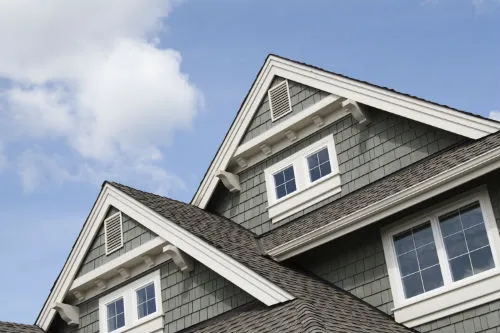Home Insurance Thunder Bay

Protect Your Investment with Home Insurance in Thunder Bay
Thunder Bay experiences a unique climate with cold winters and heavy snowfall. The city averages over 180 cm of snow per year, which increases the risk of roof damage, ice dams and frozen pipes. Harsh winter conditions can lead to expensive repairs, making home insurance in Thunder Bay essential for financial protection.
Summer weather brings its own challenges. Thunder Bay sees an average of 20 severe thunderstorms per year, leading to high winds, hail and flooding. These conditions increase the likelihood of property damage, especially to roofs, siding and basements. Without proper coverage, homeowners face significant out-of-pocket costs.
The local economy influences insurance needs as well. Thunder Bay has a growing population of over 110,000 residents, with many people employed in industries such as healthcare, education and manufacturing. A large portion of the workforce commutes daily, creating potential liability risks for homeowners with driveways and walkways that require regular maintenance during icy months.
Coverage Options for Homeowners
Home insurance in Thunder Bay provides different coverage options to protect against financial losses from property damage, theft and liability claims. Understanding policy details helps homeowners make informed decisions.
Building coverage protects the physical structure of a home against damage from fire, severe weather and vandalism. This includes walls, roofs and attached structures such as garages. Contents insurance covers personal belongings like furniture, electronics and clothing in case of theft, fire or water damage.
Each policy should match a homeowner’s specific needs. Factors such as property value, location and unique risks determine the best coverage options. Consulting with an insurance expert ensures proper protection without unnecessary expenses.
What Impacts Thunder Bay Home Insurance Rates
Several factors influence the cost of home insurance in Thunder Bay. Understanding these elements helps homeowners find ways to manage premiums effectively. Renovations and upgrades can lower insurance costs by reducing potential risks. Claims history affects rates as well. Homeowners with a history of multiple claims may see higher premiums. Location impacts rates based on local crime rates, weather conditions and proximity to emergency services.
Homes in areas with higher crime rates or frequent severe weather events typically have higher premiums. Security features such as alarm systems, deadbolt locks and smoke detectors can lower costs by reducing the risk of break-ins and fire damage. By understanding these factors, homeowners can take proactive steps to manage their insurance costs while maintaining adequate coverage.
Additional Protection for Complete Peace of Mind
Standard Thunder Bay home insurance policies cover many risks, but additional options provide extra security for homeowners looking for greater protection. Water Damage Coverage protects against sewer backups, burst pipes and foundation leaks that standard policies may not include. Identity Theft Protection assists homeowners if personal information gets stolen, covering legal fees and recovery expenses.
Earthquake Insurance offers coverage for structural damage caused by seismic activity, a risk often overlooked in standard policies. Homeowners should assess their unique risks and consider these additional coverages to enhance their financial security.
How to Save on Home Insurance in Thunder Bay
Homeowners can reduce their insurance premiums without sacrificing coverage by taking several strategic steps. Bundling home and auto insurance with the same provider often leads to discounts. Insurance companies reward policyholders who consolidate their coverage. Installing safety upgrades such as sump pumps, storm shutters and modern wiring systems reduces risks, leading to lower premiums.
Annual policy reviews help homeowners receive the best rates. Comparing quotes and adjusting coverage based on changing needs helps avoid overpaying for unnecessary protections. These practical steps help homeowners balance cost savings with comprehensive protection.

